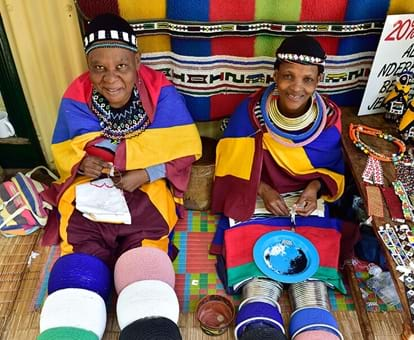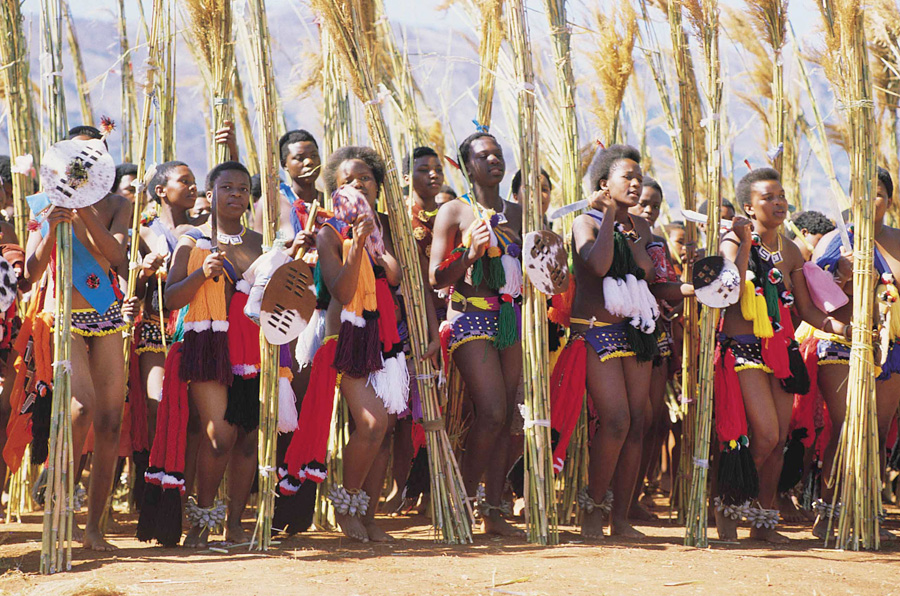Little Known Facts About South African Culture Today.
Little Known Facts About South African Culture Today.
Blog Article
Getting My South African Culture Today To Work
Table of ContentsThe Greatest Guide To South African Culture TodayAll About South African Culture TodayThe Definitive Guide to South African Culture TodayThe Greatest Guide To South African Culture TodayThe Buzz on South African Culture TodaySome Ideas on South African Culture Today You Need To Know
An issue of value in Zambian towns is the passing away of enjoyed ones. All members of the village put cash, time and initiative with each other for the burial of the deceased.Music and dance is a really essential element of the Zambian society. The different tribal units have their very own dancing kinds; nonetheless, makishi is typical among all people.
South African Culture Today Fundamentals Explained
When it concerns songs, drums are made use of one of the most, with a variety of drumming events. In Zambia, bulk of individuals are Christian; Protestant and Roman Catholic. There are small teams of Muslims and Hindus, with the remainder following local indigenous tribal ideas.

South African heritage and culture is exceptionally diverse, and is composed of various groups of people that each have their very own customs and beliefs. Having such a diversity of individuals and cultures is what makes South Africa so unique. In real sense of the expression, we are a rainbow country.
South Africa has around 3 hundred thousand Portuguese people staying in it. Making it the 7th on the listing of countries with the most Portuguese individuals in it outside of Portugal. Portuguese is not just a society, but it is also a language and a nationality. Portuguese individuals originate from the country of Portugal in Europe, however, as a result of Portugal (like lots of other nations in Europe) checking out the globe and dominating other nations during the 15th 20th centuries, South Africa has what we call Portuguese South African's living in it.
What Does South African Culture Today Do?
Among the popular features of the topography is a plateau that covers nearly 2 thirds of the facility of the nation. The plateau complex increases toward the southeast, where it climaxes in the Drakensberg array, part of a cliff that divides the plateau from the seaside locations. The Drakensburg consists of Champagne Castle, the highest peak in the country.
The area north of the Witwatersrand, called the bushveld, slopes downward from east to west towards the Limpopo River, which creates the worldwide boundary. The western area of the plateau, the middleveld, likewise descends towards the west and varies in elevation between the highveld and bushveld. Between the Drakensburg and the eastern and southern coastline, the land comes down to the sea.
Nearer the shore there is a low-lying level called the eastern lowveld. Southwest of the plateau the country ends up being progressively much more arid, offering means to the hostile desert of the Great Karroo, approached the eastern by the reduced, better sprinkled plateau of the Little Karroo. Separating the dry southern inside from the sandy coastal of the southerly coastline and West Cape is one more variety, the Langeberg.
Some Known Factual Statements About South African Culture Today
The nation's racially, ethnically, and politically separated history has actually produced national and subnational symbols that still work as symbols of the nation, and others icons that are accepted only by Extra resources certain teams. The monoliths to white settler conquest and political supremacy, such as the Afrikaner Voortrekker ("pioneer") Monolith in Pretoria and the Rhodes Monument recognizing the British colonial empire home builder and Cape head of state Cecil Rhodes, continue to be sectarian icons.
The very first contemporary occupants were the San ("bushman") hunter-gatherers and the Khoi ("Hottentot") peoples, who herded livestock (South African culture today). The San may have existed for countless years and left evidence of their presence in thousands of ancient cavern paints ("rock art"). Bantu-speaking clans that were the ancestors of the Nguni (today's amaZulu, amaXhosa, amaSwazi, and vaTsonga individuals) and Tswana-Sotho language teams (today's Batswana and you can try these out Southern and Northern Basotho) moved below east Africa as early as the fifteenth century

Both previous republics of the Orange Free State and Transvaal (South African Republic) were developed by Afrikaner settlers that beat and dispossessed the Basotho and Batswana. Lesotho would have been forcibly included right into the Orange Free State without the extension of British defense in 1869. The utmost unification of the nation resulted from the South African Battle (18991902) between the British and both Afrikaner republics, which reduced the country to wreck at the start of the twentieth century.
Afrikaners historically considered themselves the just real South Africans and, while giving full citizenship to all locals of European descent, refuted that standing to people of shade until the democratic change of 1994. British South Africans keep a sense of social and social connection to Great Britain without compromising their identity as South Africans.
The Facts About South African Culture Today Uncovered
The diversity and fragmentation within ethnic collections and the equilibrium of stress in between those groups throughout the twentieth century protected against interethnic civil problem. While intergroup tensions over resources, privileges, and political supremacy remain, those problems are as likely to pit Zulu versus Zulu as Zulu against Xhosa or African versus Afrikaner.
From colonial India, British merchants and administrators brought the curved metal ornamental roofs and slim lace job pillars that still typify the terraces of cottages in communities and cities throughout the nation. Homes of worship add an important building aspect also in the smallest communities. In addition to the Read Full Report skyrocketing steeples and classic stonework of Afrikaans Dutch Reformed churches, Anglican churches, synagogues, mosques, and Hindu shrines provide range to the spiritual building scene.

Butchering and the developing of traditional cereal beer are vital in safeguarding the participation and goodwill of the ancestors who are thought about the guardians of good luck, success, and health. Indian areas maintain their native cooking customs and apply them on Islamic and Hindu routine and ritualistic celebrations. Afrikaners and Coloured people gather at weekend breaks and special celebrations at multifamily bbqs called braais, where community bonds are strengthened.
Since this was the key economic business of both black Africans and white colonists, problem between those groups centered on the belongings of grazing land and animals. In 1867, the biggest ruby down payments in the world were found at Kimberley in the west central location. The wealth from those areas helped fund the exploitation of the best gold coral reef worldwide, which was discovered on the Witwatersrand in 1886.
Get This Report on South African Culture Today
This brought about misunderstandings and deliberate misstatement in the dealings of white inhabitants and government authorities with African chiefs during the early american period (South African culture today). In the facility of African reserves, some facets of public and primarily "tribal count on" land tenure were maintained, and even in white country areas, types of public tenure were still exercised in areas with African neighborhoods
After the democratic change of 1994, programs for land restitution, redistribution, and reform were set up, but development has actually been sluggish. The white minority still regulates eighty percent of the land. In the wake of agricultural land intrusions in Zimbabwe, the Department of Land Affairs has actually pledged to speed land redistribution.
Report this page